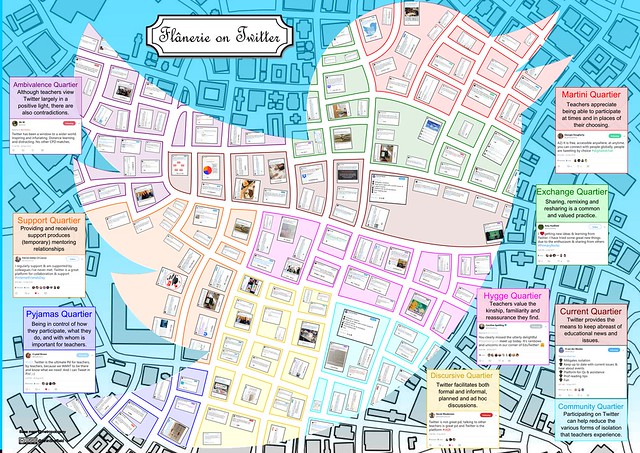
One of the factors prompting this study was the number of people who tweeted how important Twitter was in supporting their professional learning. The following tweet provides a reminder of the kind of sentiment expressed:
During participant observation I curated a corpus of educators’ tweets which referred in some way to both professional learning and Twitter. Analysing this corpus revealed that educators frame Twitter PD in different ways. The capacity to be able to choose the routes you take, the content you see, the time and duration of your involvement and the location from which you participate are important to many. However Twitter is perceived, one can find or be exposed to a wide range of resources, ideas, advice, research, inspiration, support, and answers to questions.Read More »

 A single tweet and the hashtag with which it participates provide a point of departure in this Gathering. I first explored the exchange which unfolded from the tweet below and the interrelations between the human participants. This exchange and the #teamenglish hashtag which helped to bring it together, brought me to a second, longer series of interactions assembled by and around a nonhuman actor, the ‘crib sheet.’ Finally I followed the hashtag to the #teamenglish ‘community’ it assembles, then compared and contrasted that with a similarly enacted sister community, #mfltwitterati.
A single tweet and the hashtag with which it participates provide a point of departure in this Gathering. I first explored the exchange which unfolded from the tweet below and the interrelations between the human participants. This exchange and the #teamenglish hashtag which helped to bring it together, brought me to a second, longer series of interactions assembled by and around a nonhuman actor, the ‘crib sheet.’ Finally I followed the hashtag to the #teamenglish ‘community’ it assembles, then compared and contrasted that with a similarly enacted sister community, #mfltwitterati.




